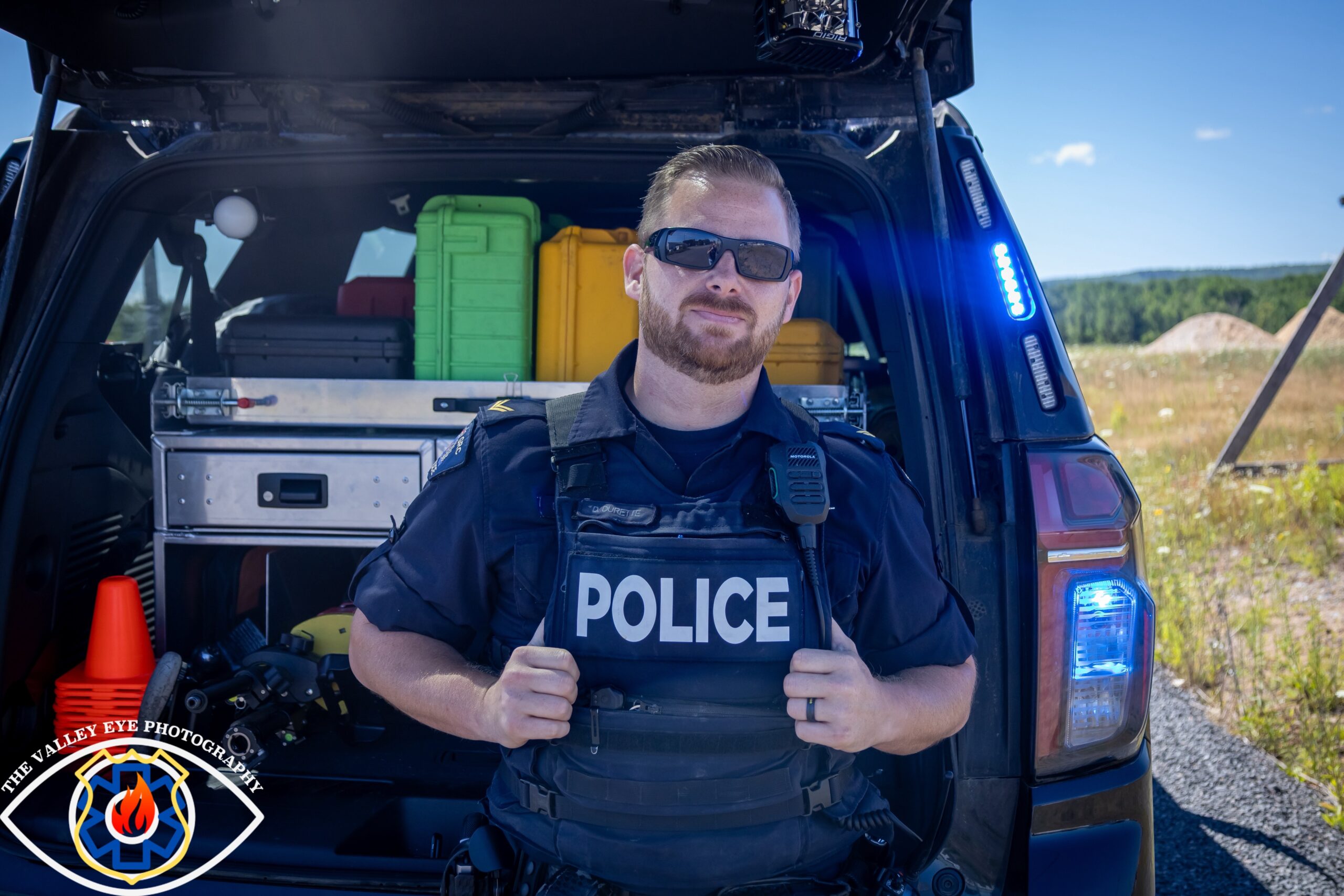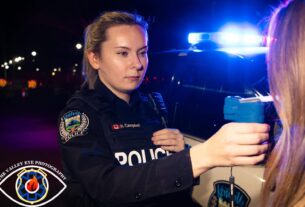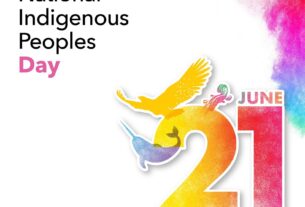Each and everyday across Nova Scotia, emergency services respond to motor vehicle collisions on our roadways.
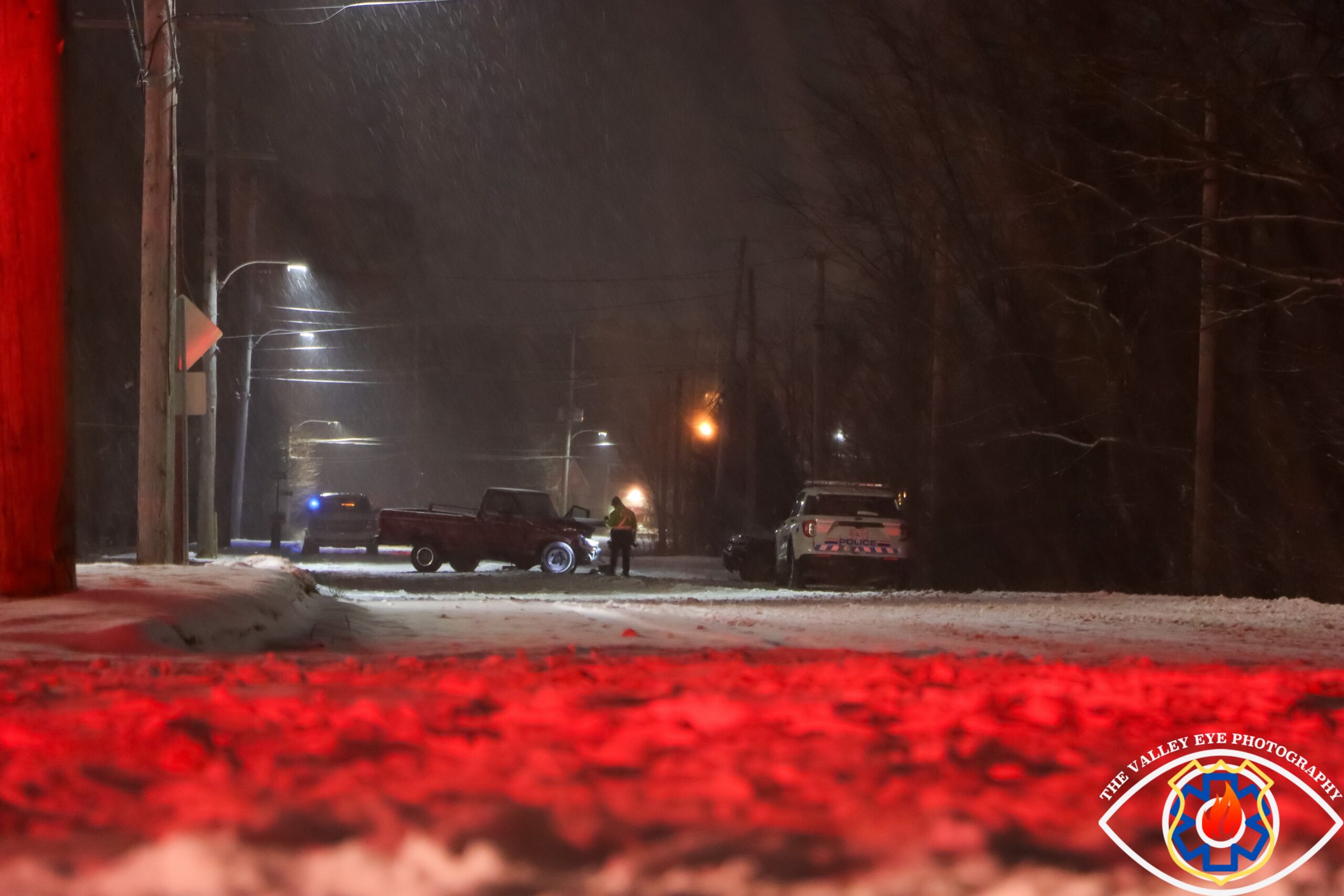
Serious collisions have been on the rise, with a significant increase in fatal accidents being reported by the Nova Scotia RCMP in 2024.
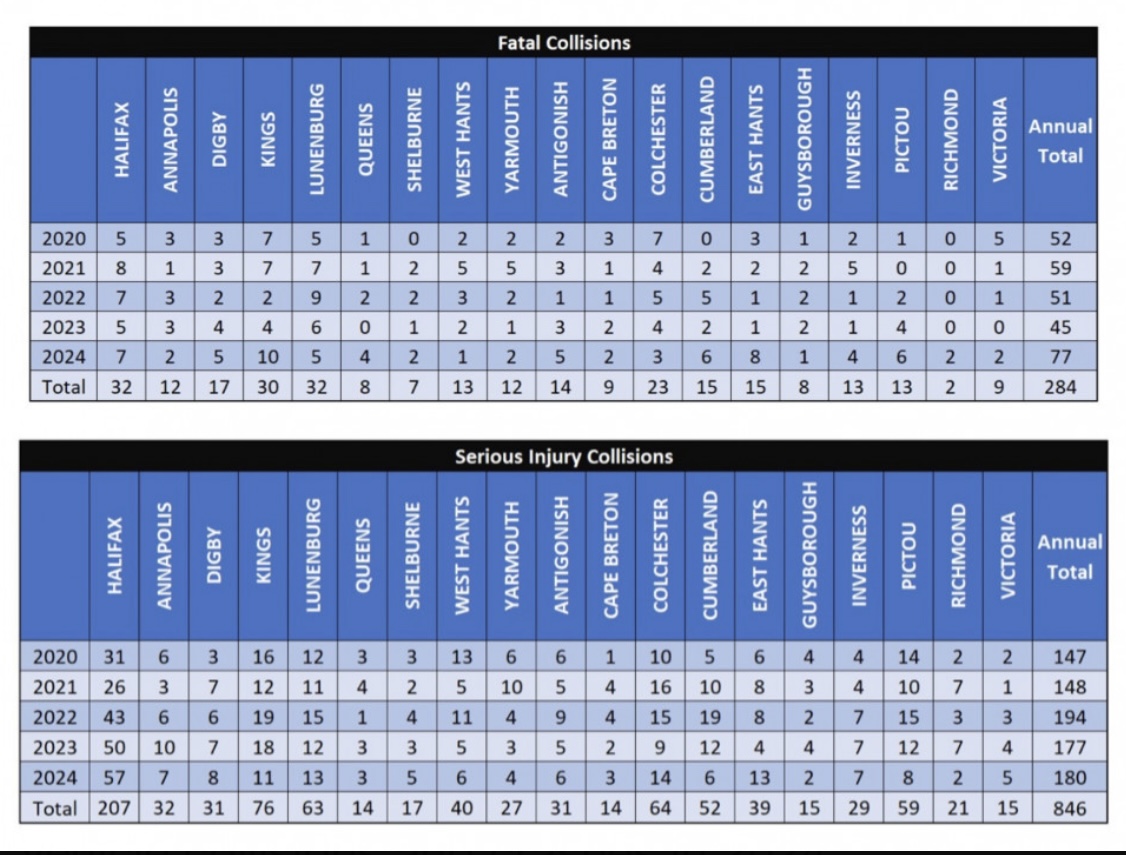
But what is causing these collisions, how are they investigated, and how can we prevent them?
When serious and fatal accidents occur, the Collision Analysis and Reconstruction Services also known as (CARS) are called, bringing in skilled officers who dedicate their service to investigating and providing technical reports, data, and conclusions following such collisions.
Corporal Dustyn Durette with the RCMP in Nova Scotia, is a collision analyst with the Collision Analysis and Reconstruction Services.
When a collision is reported, he, along with other analysts, are called upon to investigate and determine the causes and factors that contribute to such collisions.
Corporal Durette has been with the RCMP in Nova Scotia for 9 years, spending the majority of his career in RCMP detachments as a general duty member in the Cole Harbour, Tantallon, and Lower Sackville communities.
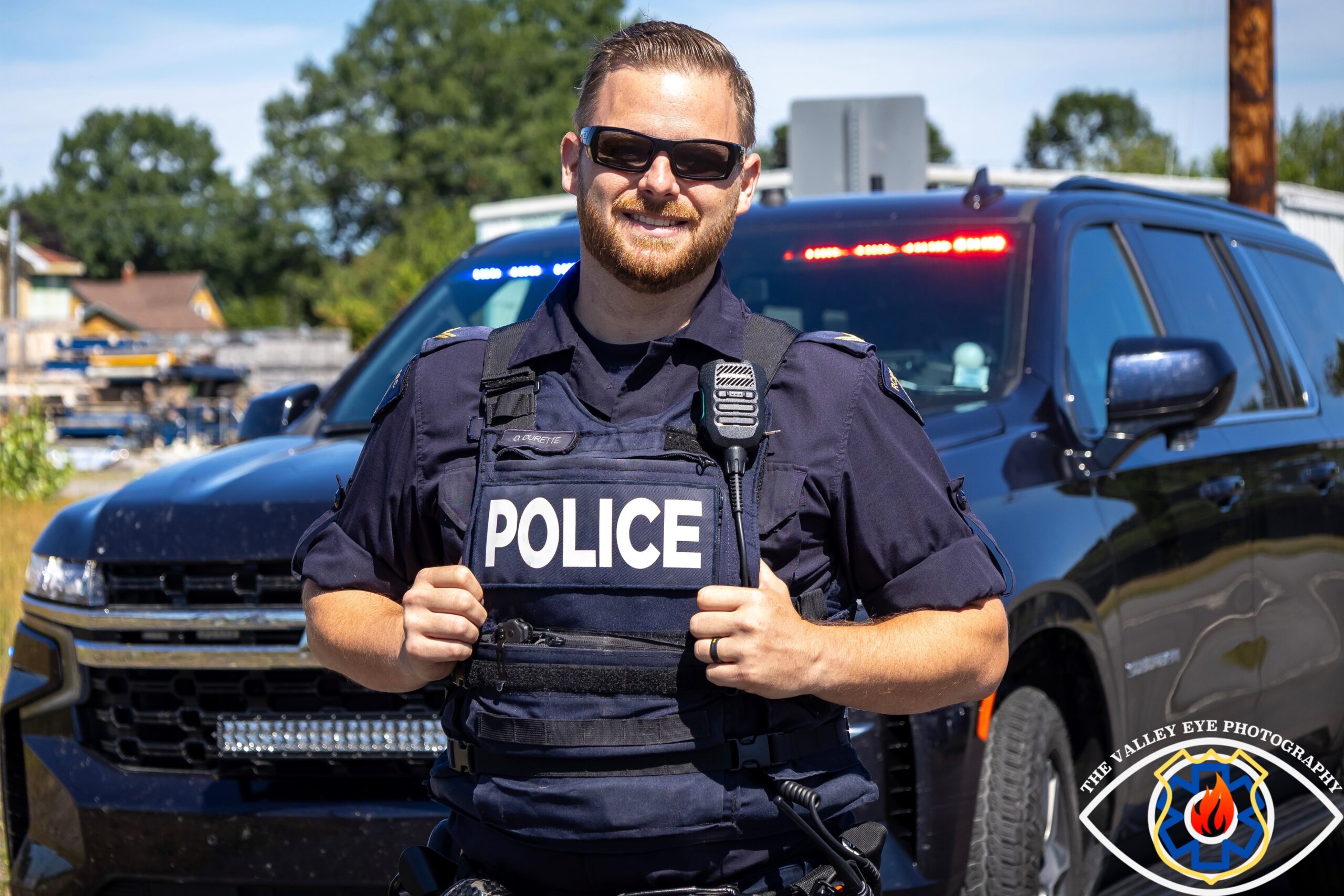
“When I became trained to become a collision analyst, I transferred to a traffic services unit,” stated Corporal Durette.
Within the RCMP, there are multiple branches and divisions who serve a specific purpose within policing.
The CARS unit is a part of the traffic services umbrella. While many members in traffic services are doing the front-end work with enforcement, like issuing tickets for seat belts, speed, and providing education, CARS does the back-end work.
“My job is to work after the fact, after something terrible has happened and try to find out what caused this to happen and is there anything that contributed, that we could make safer on the roads,” Corporal Durette shared.
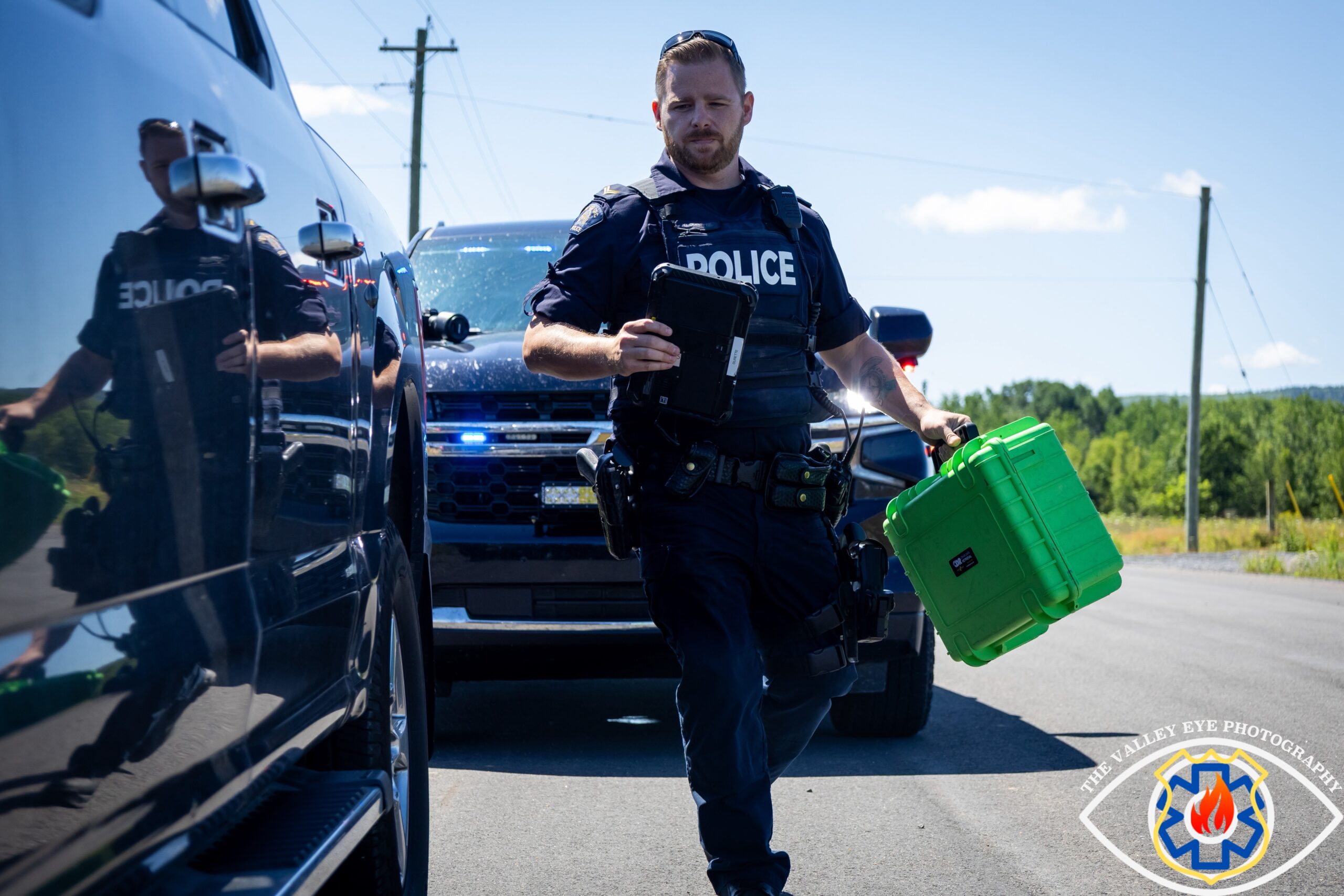
When joining traffic services, Corporal Durette received further in house training to become an analyst.
When joining the RCMP, officers receive level 1 basic car crash investigating while at depot.
Some officers move up to level 2 after demonstrating interest which includes more technical aspects like roadway evidence, basic measurements and field sketches.
“After some more experience, you get selected to go on level 3. that’s the level I’m at now,“ Corporal Durette stated.
Level 3 is more specialized in determining velocity in different scenarios, such as a tumble. This involves looking into commercial vehicle and pedestrian collisions, more serious two vehicle collisions, while also learning how to look at crashes from different angles and then putting your findings into a report.
With all this training under his belt, Corporal Durette out of the Kings District RCMP, has been a collision analyst investigating collisions across Nova Scotia for 3 years.
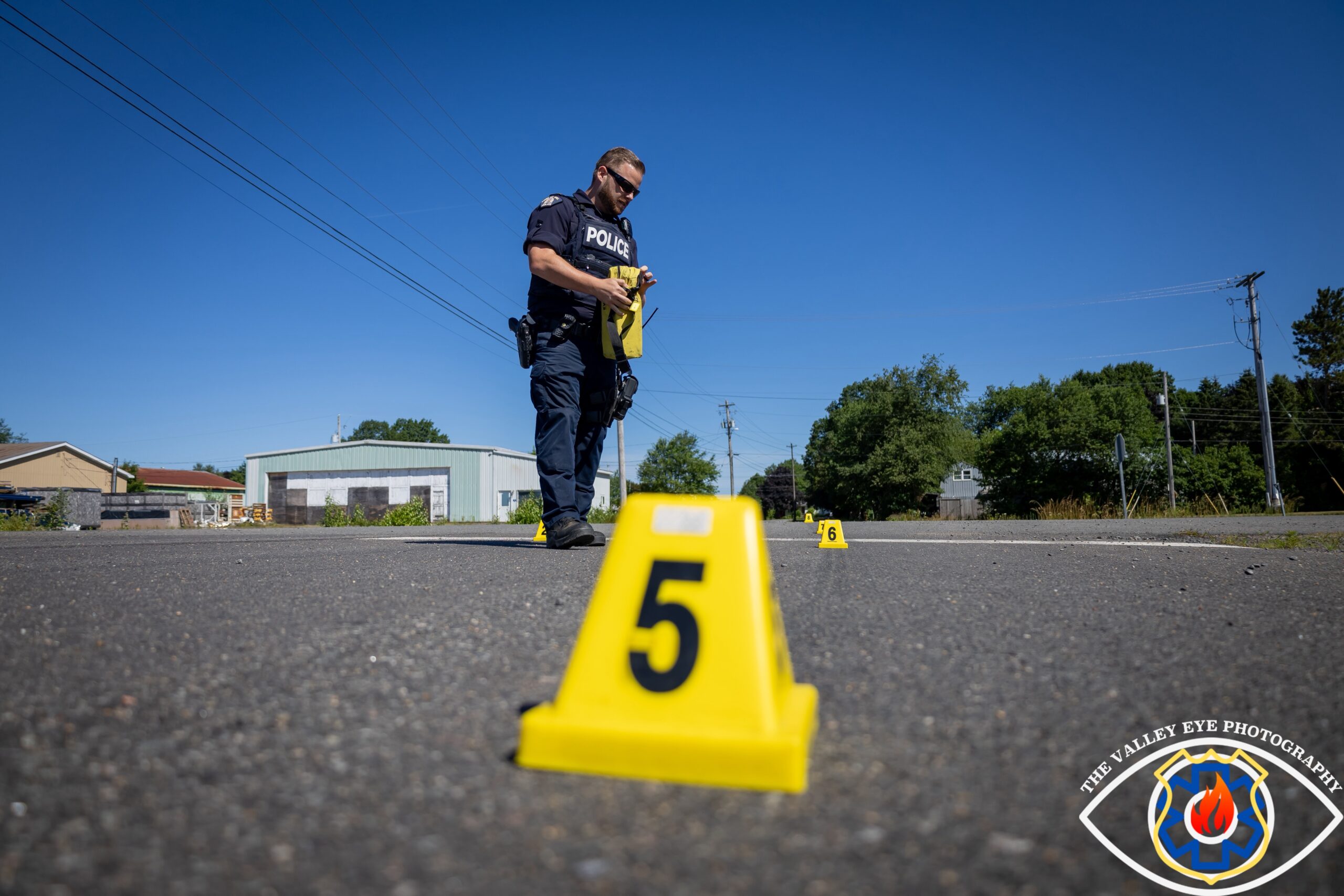
Corporal Durette was able to share some valuable insight about his role as an analyst.
“We don’t go to the kind of car collision that most people see in their everyday life where there’s a police car and a tow truck. We go to fatal collisions, collisions with life threatening injuries, or a collision with very serious injuries and where criminal charges are possible. We also go to collisions with police vehicles or ones that grab public interest,” Corporal Durette stated.
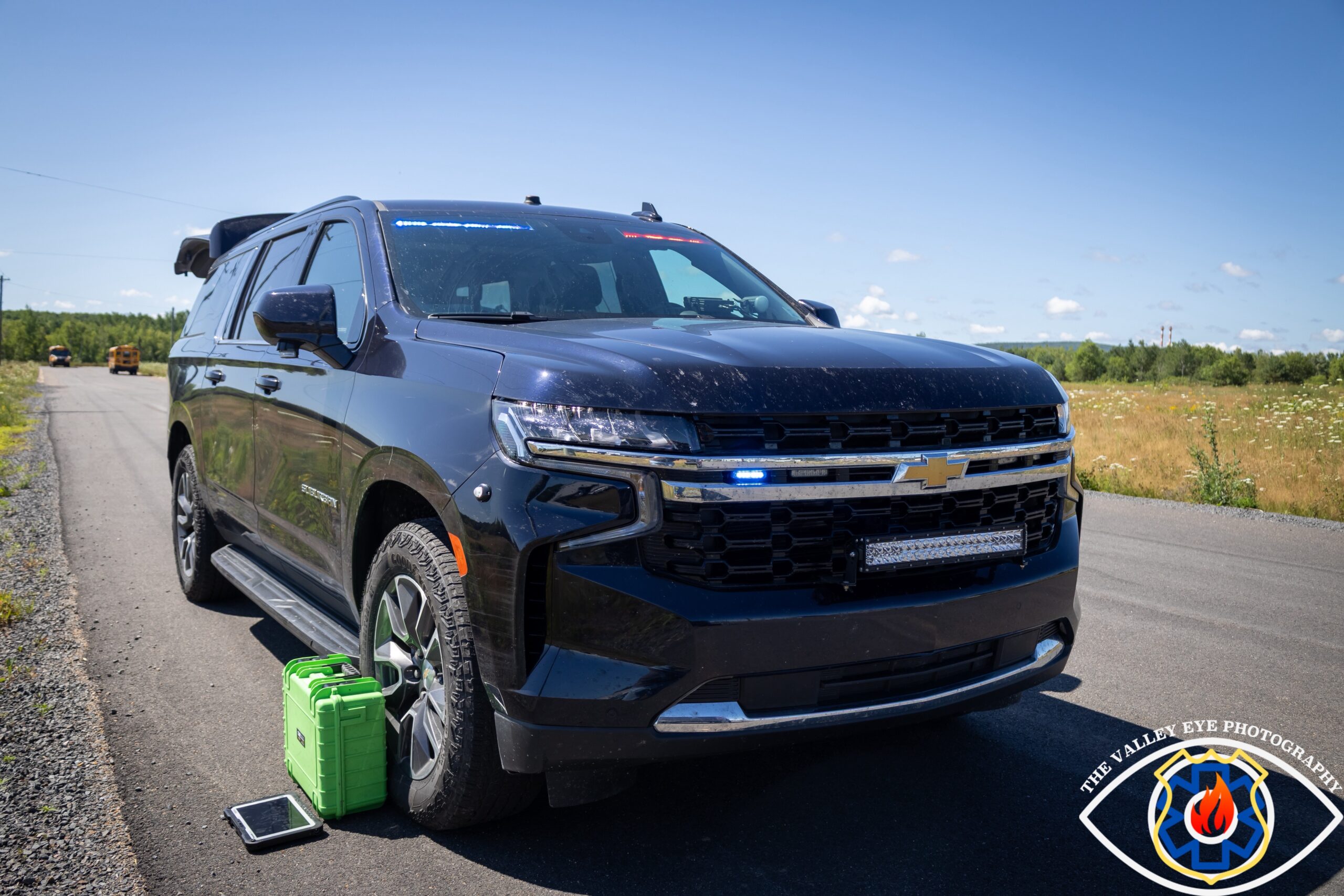
CARS primarily investigates collisions on provincial roadways. In some cases, they may be called to assist other agencies and use their resources to investigate incidents that may be out of their jurisdiction depending on the nature.
With many tools and equipment, analysts use a number of methods to help reconstruct a collision by using tools such as tape measures, drone technology, photo evidence, survey data, and airbag modules to help gather information to determine a cause.
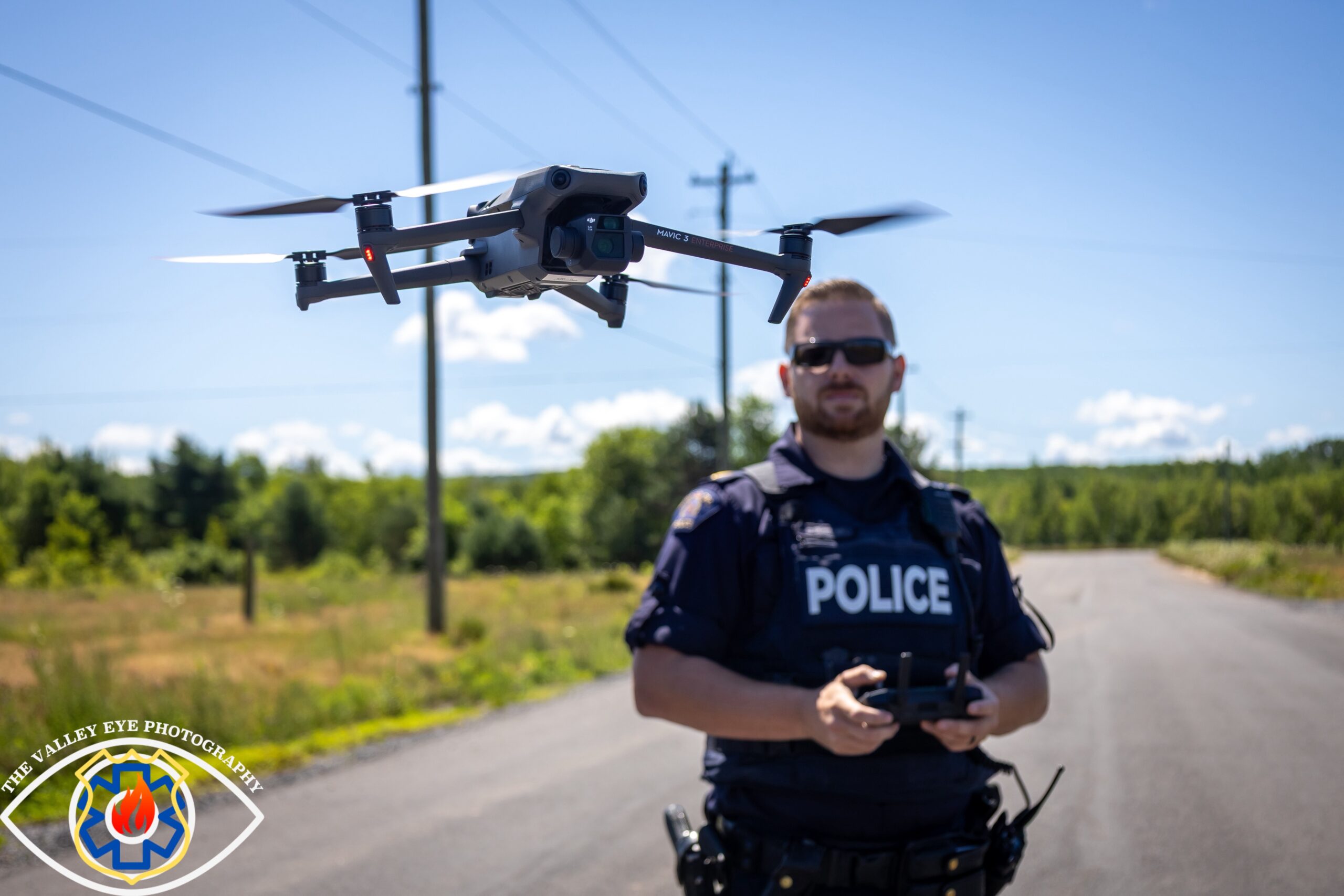
“The goal with those tools is to reverse engineer the road the best we can along with the evidence and the vehicles so we can piece together the circumstances of the crash,” Corporal Durette explained.
Analysts are also able to determine a precise speed a vehicle was going following a crash by using scientific data from friction.
Corporal Durette was able to provide a mock simulation by using a tire filled with concrete to provide a concise number from the friction on the roadway.
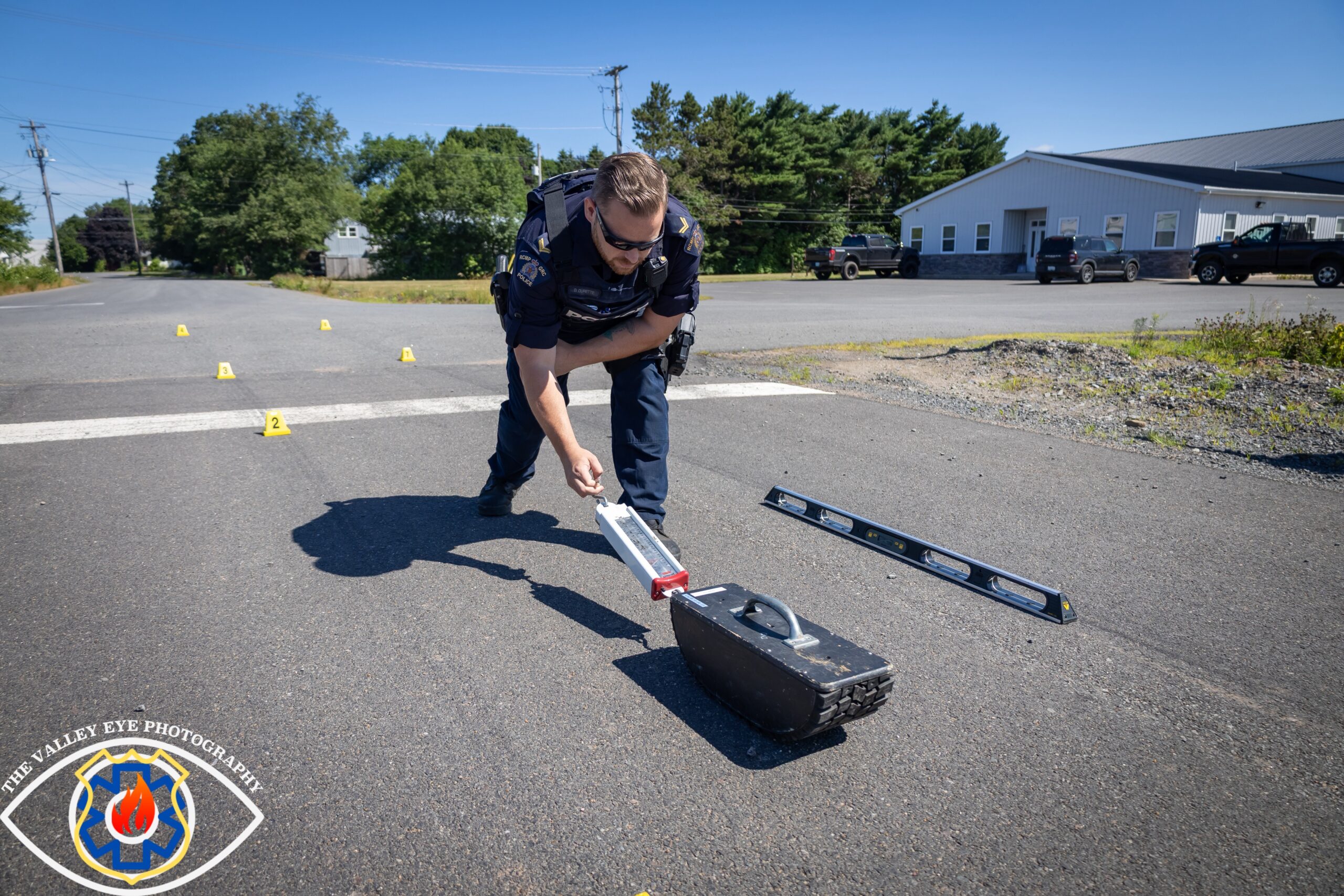
“We all know intuitively that ice is more slippery than concrete, but there’s grades between those two things so what I’m doing is putting a scientific numbers on how much friction is on that road. The main purpose of that is to determine vehicle speed or a safe traveling speed on that particular road and place at that time,” explained Corporal Durette.
Analysts can come back with numerous conclusions following their findings.
Because each crash is different, depending on the debris fields, how many vehicles are involved, and the circumstances surrounding the collision, this all can affect the outcome of an investigation.
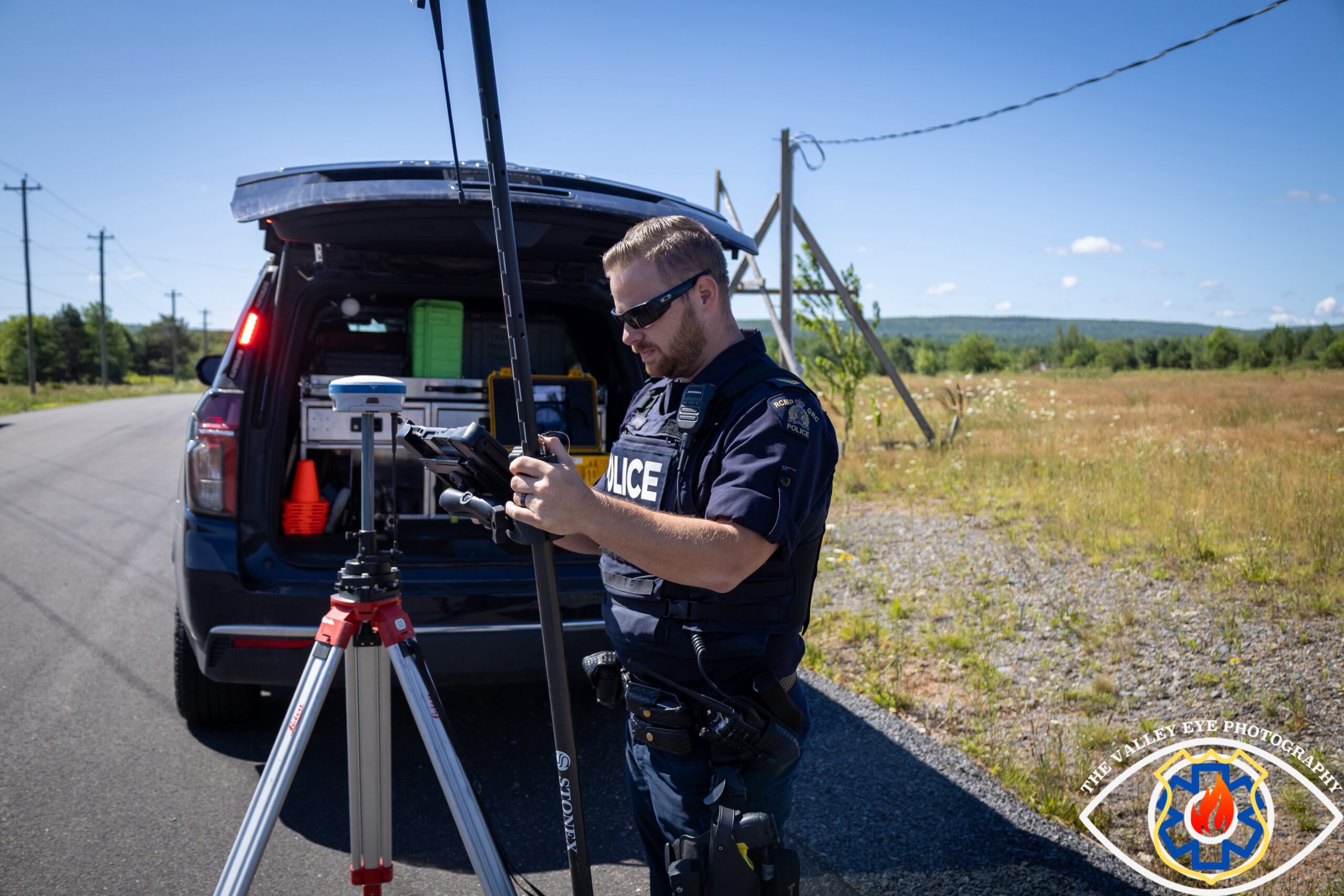
Generally speaking, analysts can conclude the cause of the collision. They can determine whether there were contributing factors such as weather, mechanical condition of the vehicle, sun being in a motorists eyes, and if the occupants were wearing their seatbelts.
Collision analysts can also determine how fast a vehicle was going by using a physical and/or electronic evidence.
“What was the pre-collision direction of a car? So, if you can imagine a head on collision – who was on the wrong side of the road? That’s always an important question and we will conclude that as well,” crash analyst Corporal Durette shared.
There are four main causal factors as a result of serious and fatal collisions: impairment, failure to wear a seat belt, driving excessive speeds, and distracted driving.
These causes are backed by evidence and data from CARS investigations.
“Sometimes when there’s a very serious collision on a back road or even a major highway, there’s often no witnesses. We go and try to reconstruct what happened based on the evidence that is there on scene. Yes, sometimes we can conclude that someone wasn’t wearing their seatbelt, while driving too fast, so we have two major factors, or maybe they were driving too fast while being distracted. These four things together, especially if they compound on each other, make driving that more dangerous,” Corporal Dustyn shared.
There are many obstacles that analysts encounter during their work. Depending on each call the weather can play a role in evidence gathering. They have to ensure the scene is secured which results in the road being closed to ensure evidence can be documented accurately.
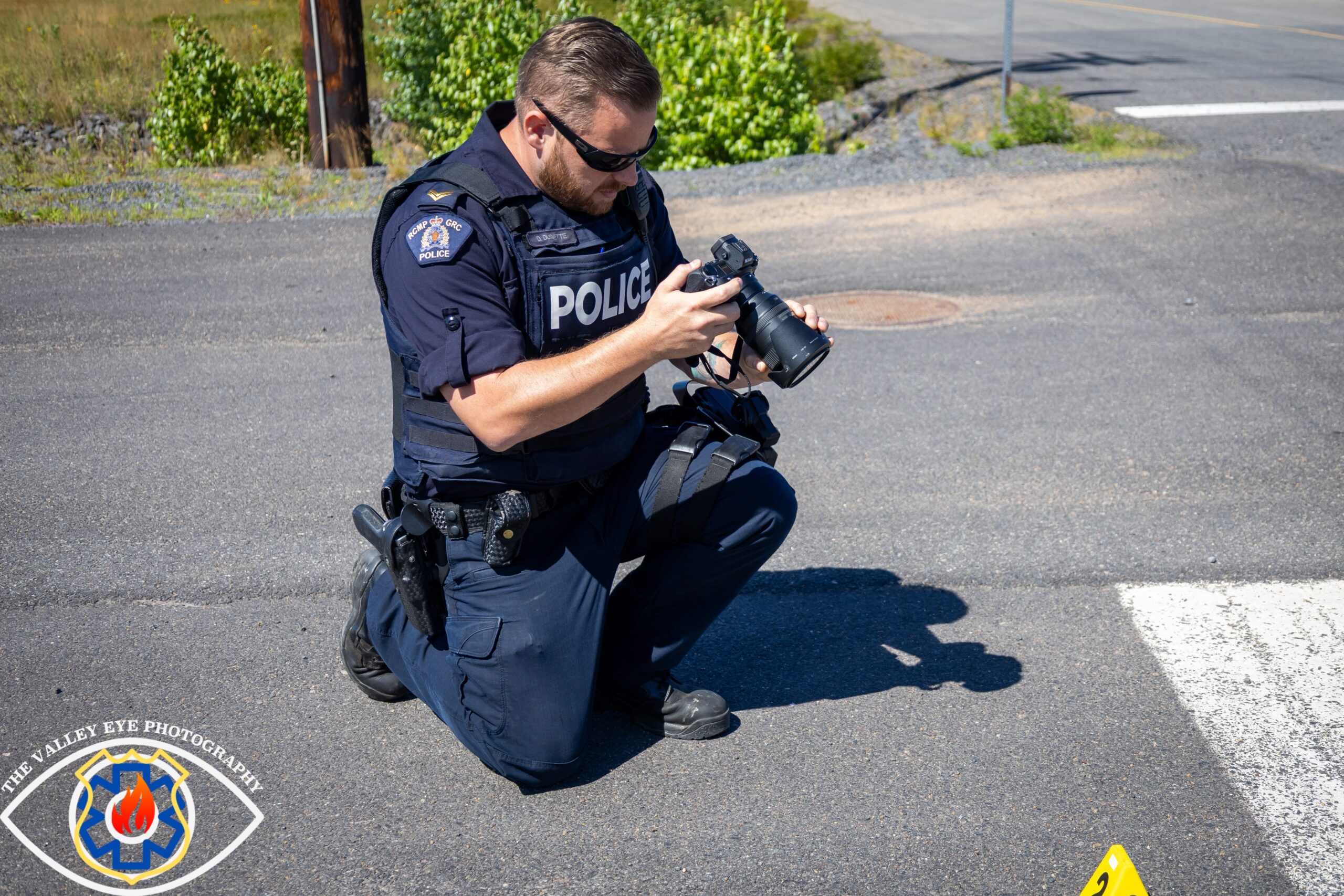
In many cases, random pieces of debris can be extremely important to the investigation. From paint transfer to vehicle components, these objects can make a difference in an analysis and it’s important this evidence is there when they arrive.
When analysts are at collisions, roads can be closed on average between 4-6 hours and even longer depending. It takes so long because there are so many details that need to be recorded, from tire marks, gauges in the road, and evidence from the vehicle involved.
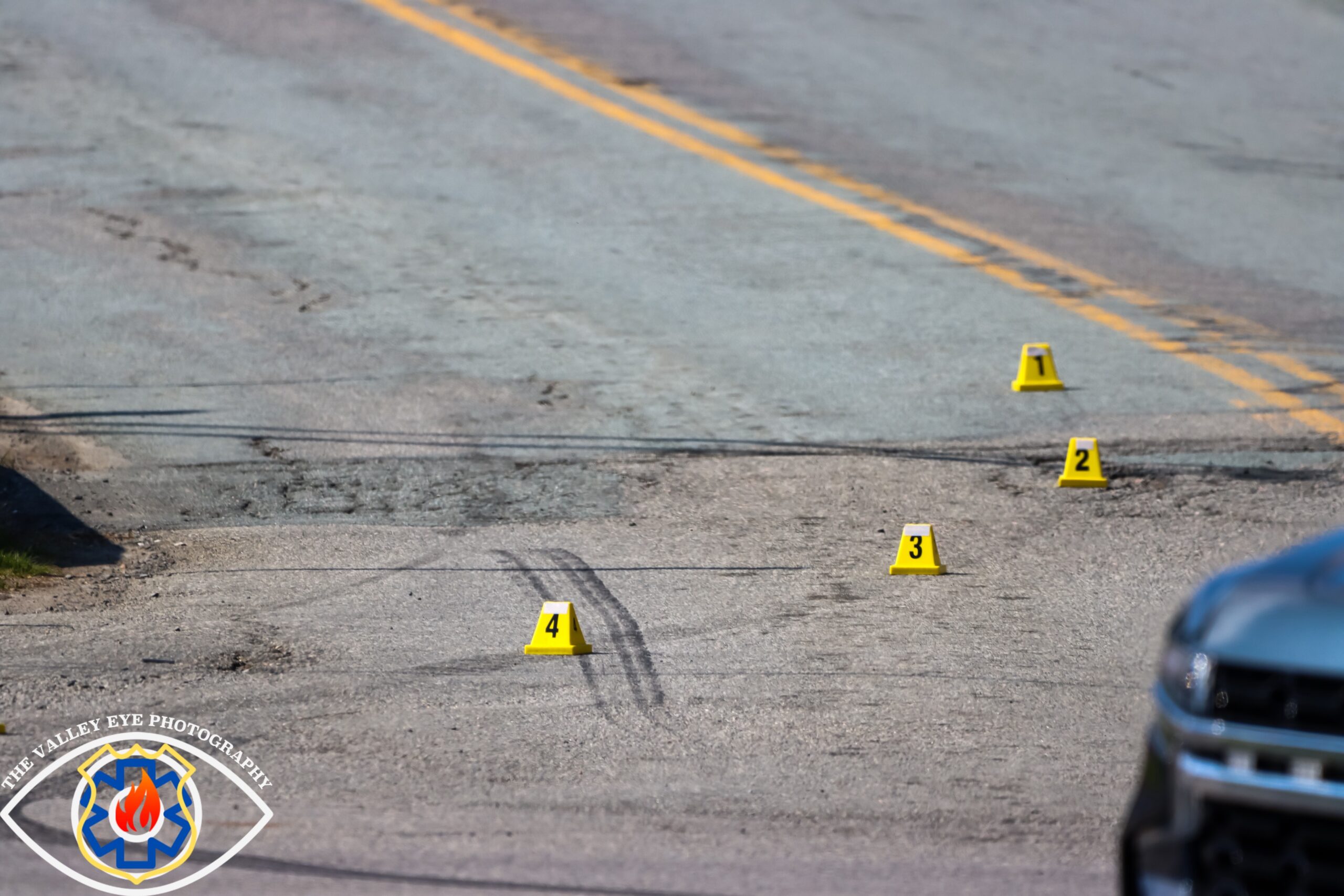
“Once I leave, it’s gone, it disappears quickly. I have to get it while it’s there and I only have one chance, so I take my time and I’m detailed,” Corporal Durette responded after asking why roads are closed so long.
After gathering of evidence at a crash is complete, the work isn’t finished. Analysts spend their time compiling the data they collected when they aren’t responding to collisions, ultimately putting the pieces of a puzzle together to form conclusions from the evidence they collected.

Their reports are in depth, which are used as expert documents in court, with hundreds of pages of data from just one particular collision.
In many cases, the reports from analysts also determine the safety of roads, which might include intersections and signage, forming recommendations to adjust safety on our provincial roadways.
“Criminals will do crime, but everyone drives on the road. Sometimes, even the most well-meaning person can cause harm through a moment’s inattention. It’s not malice, it’s randomness. That’s what makes it so unsettling. It could be anyone, even the reader. I see a lot of these things are preventable, I’m seeing a more aggressive driver mentality in the province these days, I’m seeing higher speeds, I’m seeing less seatbelts and more distraction.”
Corporal Durette touched on how he sees that people aren’t taking their own safety as seriously as they could be. While it’s one thing to drive careful for yourself, you also have to watch out for the people around you.
When talking about what motorists could do to better protect themselves when behind the wheel, Corporal Durette wanted to remind motorists to not to be in such a hurry.
Try leaving just 5 minutes early, maybe you wouldn’t drive that fast, roll a stop sign, and maybe you would remember to put your seatbelt on. Plan your trip and take the time you need and make safer choices.
There are currently four RCMP traffic analysts who investigate collisions in Nova Scotia with several support members who also assist when CARS is required.
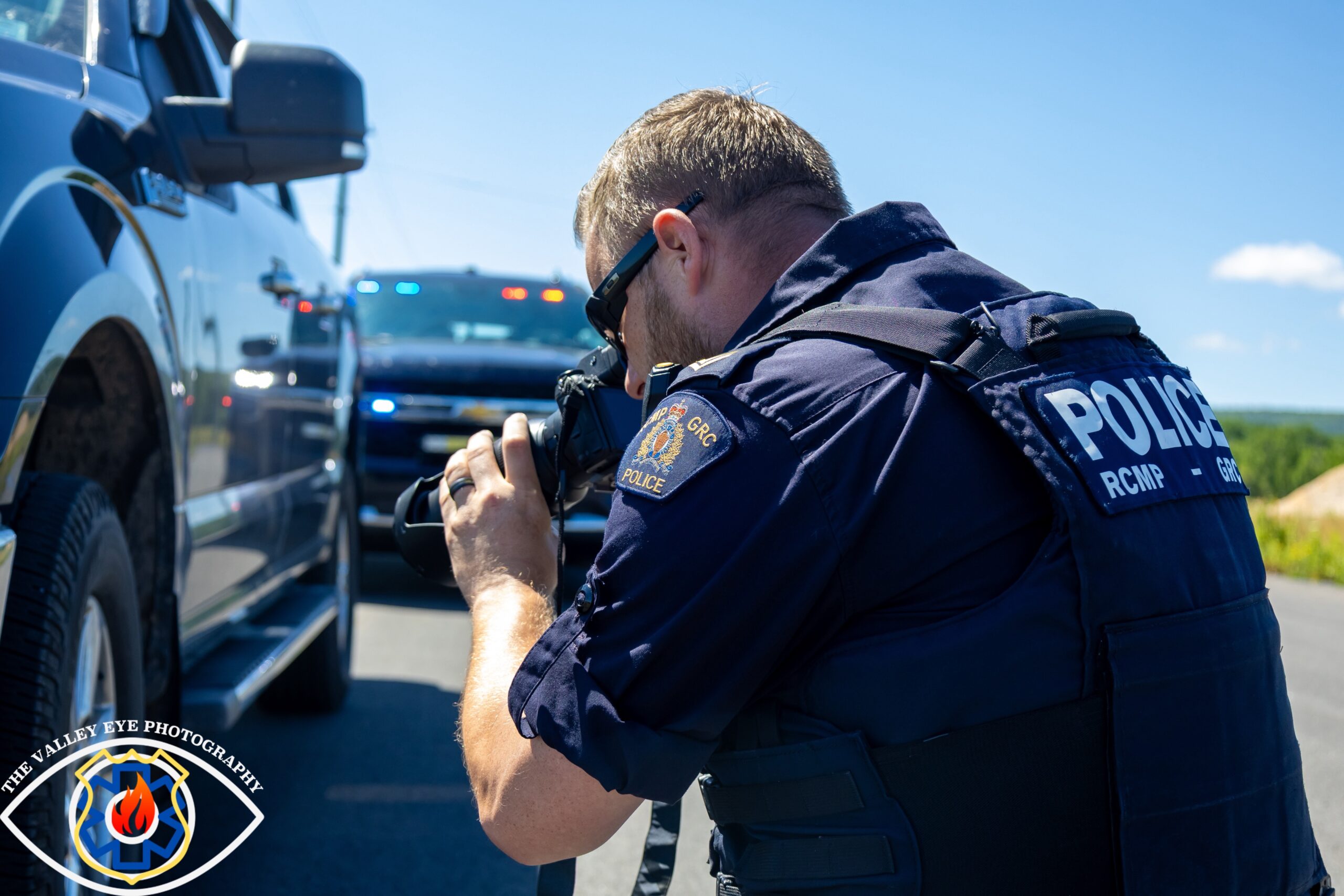
“The most well meaning person can slip up and cause a tragedy. I just ask people to pay more attention and take the time they need,” Corporal Durette expressed.
Special thank you to the Nova Scotia RCMP and Corporal Durette for allowing me to get a firm understanding on the role that CARS plays in our province.
Adrian J.

